Rare species are always challenging, and each specie has its own set of unique dynamics and logistics that need to be fully addressed for achieving a successful sighting. We, at Nature Wanderers thrive under such tough challenges and pride ourselves in accomplishing such projects. Tracking down a rare species requires sound ground research, immense field experience, collaboration with naturalist and research teams, access, technological know-how, resources and understanding of animal behavior. Time and again we have worked with photographers who have thrown challenges at us and such challenges have sparked the beginning of tourism models around certain species, which have been then followed by others in the field. Right from the elusive red pandas of the Eastern Himalayas to the fishing cats of the Terai belts and the world’s smallest wild cat, to the rare caracal in the Kenyan forests and the clouded leopard in the Southeast Asian rainforests, we have successfully followed through and delivered results in the search for these rare animals. And it’s not just these specific species. As our search for rarity takes us into the thick of unchartered land, we often stumble upon unexpected surprises and many times the photographs created during such expeditions have ended up becoming record shots in the wild. So, if working around a particular species excites you, it excites us as well! Write to us with your specie interest and we may just have the right expedition tailor made for you.
Weighing just over a kilogram, the rusty spotted cat is the smallest wild cat in the world and India is one of the major habitats for this elusive specie. A resident of dry and deciduous forests, the rusty spotted cat prefers scrubs, grasslands and rocky terrains. Rodents, birds, insects, frogs and lizards are some of the prey base for this miniature cat. Habitat loss is one of the major areas of concern. Nature Wanderers has executed projects helping photographers to build a portfolio of images of this elusive specie. Contact us for more details.
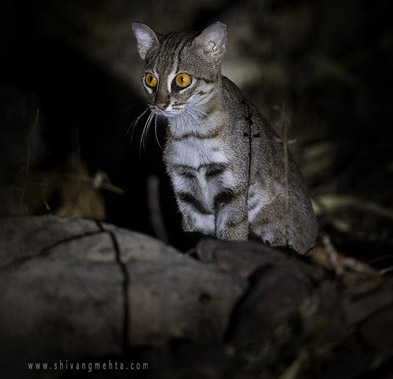
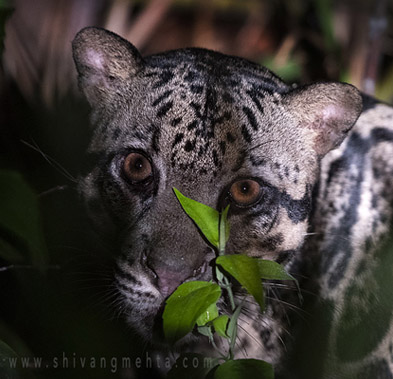
The rare and elusive Sunda clouded leopard is native to the rainforests of Borneo & Sumatra. With an overall yellowish and greyish coat and distinctive cloud like patterns on its coat, this cat is also known to be the evolutionary link between large cats and small cats. The Sunda clouded leopard is mostly nocturnal and deforestation around the islands of Borneo is a major cause of concern for this specie. Nature Wanderers Borneo photo safaris have been extremely successful from a clouded leopard perspective. It would be an added advantage to be equipped with DSLR camera traps. Contact us for details.
A predominantly wetland feline, the fishing cat is found in mainly in the Terai Gangetic plains and the swamps and mangroves of West Bengal. The fishing cat is also found around the wetlands of Orissa and Andhra Pradesh. Mostly a nocturnal animal, the fishing cat uses its webbed paws to catch fish, frogs and even scavenges on carcasses of larger mammals. Locally called the Baghrol, it is also the state animal of West Bengal. Nature Wanderers works with wildlife photographers on DSLR camera trapping and direct sighting photographic opportunities of fishing cats in India. Write to us for details.
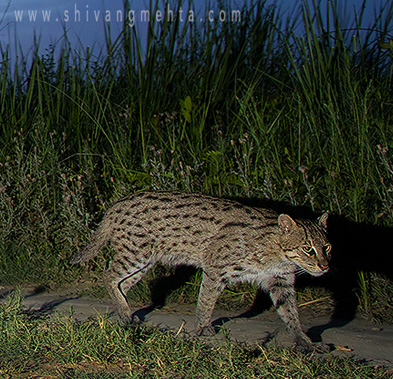
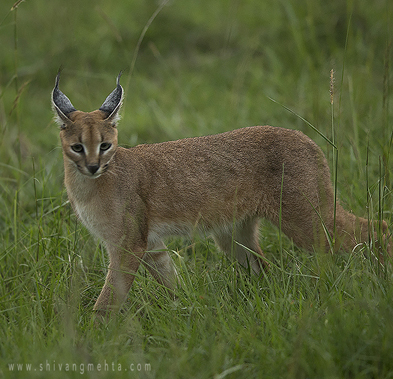
The highly secretive caracal is spread across continents and found in Africa, India, Middle East and Central Asia. With a prey base of birds, rodents and small mammals, the caracal is known for its astute hunting skills as it can leap 10-12 feet high in the air to catch bird’s mid-air! The characteristic long tufted ears of the caracal make it one of the most photogenic small cats. Nature Wanderers has executed caracal photography projects in different African locations. In case you want us to plan a project for you, get in touch with us.
A small wild cat widely distributed across India, the leopard cat has spots and rosettes that resemble a leopard and despite its huge spread, it is very rare to see. The shy and elusive leopard cat hunts rodents, frogs and is mostly nocturnal. Nature Wanderers has executed leopard cat photography projects for photographers in various locations of India & Borneo, which is home to the Sunda leopard cat. Write to us in case this specie is your area of interest.
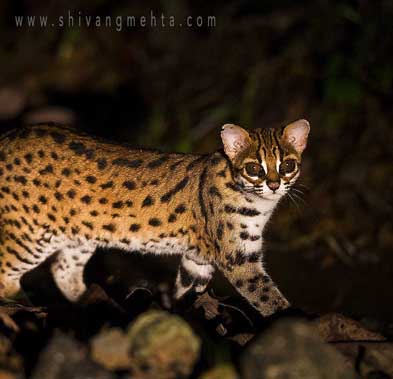
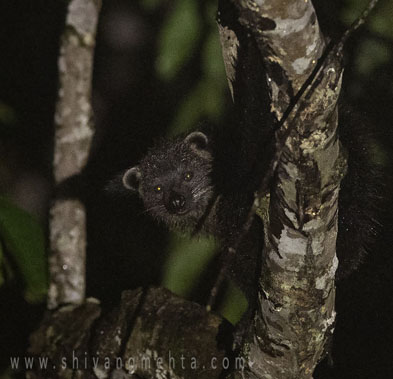
Also known as the bearcat, the binturong is a robust animal living in the dense forests of Southeast Asia and quite rare to spot in the wild. Binturongs belong to an ancient group of mammals and although they are carnivores, they also like to gorge on fruits. Listed as vulnerable on the IUCN list, binturongs face major threats in the form of wildlife trade, hunting and habitat destruction. Get in touch with us in case you want to know more about this fascinating animal.
These excellent climbers are also the smallest of the bears and have a characteristic yellow-white patch on their chest. They get their name from this patch of fur which looks like the rising or setting sun. Found in the tropical forests of Southeast Asia, illegal hunting, wildlife trade and habitat loss has led to a massive decline in their numbers. Sun bears spend most of their time up on the trees and feed on fruits, rodents, insects and birds. Write to us for a detailed itinerary focusing on this specie.
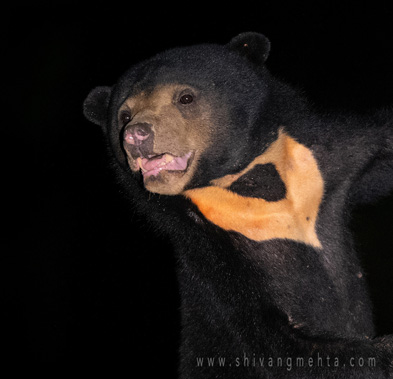

These highly sociable primates get their common name from the patch of dark fur that they have on their heads. With tails that measure longer than their entire body, the capped langur is a beautiful arboreal mammal to photograph. The distinctive colour of their fur creates a unique visual delight amidst a backdrop of green. Studies have shown that they have seasonal variations in their colouration which is also based on the geographic location. These animals have been hunted for food and habitat loss is a constant threat. Contact us for more.
With large dark bands across its back, and also known as the banded palm civet, this animal is a rare civet species found in the forests of Southeast Asia. Solitary and nocturnal, the banded civet feeds on small snakes, frogs, rodents, insects and fruits. Although mostly terrestrial, they are also great climbers. Logging and deforestation are causing a rapid habitat loss, threatening the survival of this species. Write to us for a detailed itinerary revolving around this species.
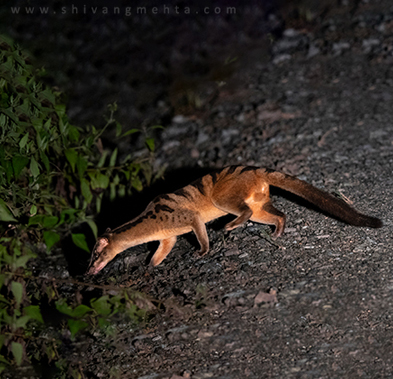
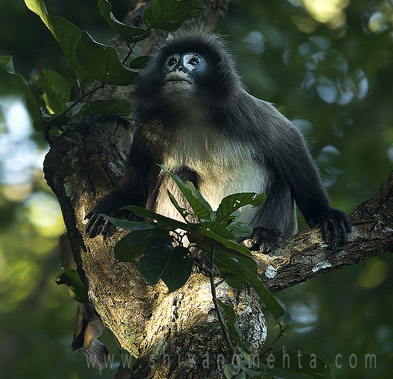
These primates get their name from the white rings around their eyes, which makes them look as if they are wearing spectacles over their eyes. Also known as the Phayre’s leaf monkey and the dusky leaf monkey, these Old-World primates are found in the canopies of the Southeast Asian forests. The most rewarding photographs of this species are of their golden yellow babies, which stand out in a stark contrast against the grey/ black fur of the adults. They are threatened by habitat loss and human activities in their preferred forests. Get in touch to know more.
Also known as Gee’s golden langur, these animals are Old World monkeys, found in small pockets of forests in Northeast India and the foothills of southern Bhutan. Scientifically classified only in 1953, this is the most endangered primate in India. Rapid loss of habitat resulted in a grim decline in their numbers, but extensive conservation work in the form of community involvement has led to a great amount of awareness and protection of this species. Visit the beautiful forests of Northeast India with us to photograph these amazing animals.
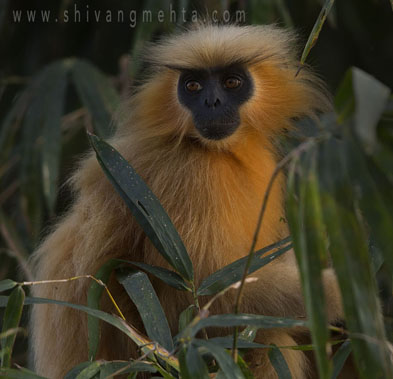
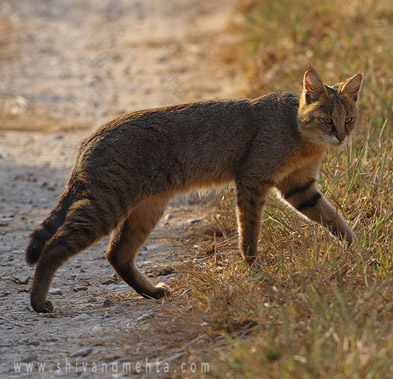
With a wide distribution range, the jungle cat is a medium sized feline, found in a variety of habitats from dense vegetation to agricultural fields. This cat hunts throughout the day and can walk for long stretches at night. Because of its size, this species has many competitors and predators in the wild. Even with their wide range, jungle cats are rarely seen, and their numbers have declined due to hunting and habitat destruction, along with human activities like dam construction and urbanization. Join us on an exciting expedition focusing on this highly adaptable feline.
Living in dense hill forests and foraging on fruits in the forest canopy, the Rufous necked hornbill is an exquisite bird with a characteristic sky-blue patch on its face and a red throat pouch. Found in Northeast India and parts of Southeast Asia, this large hornbill has become locally extinct in Nepal. Although protected, the species is still threatened due to hunting in the habitats where it is found today. Write to us and know more about this spectacular bird and how and where to photograph it.
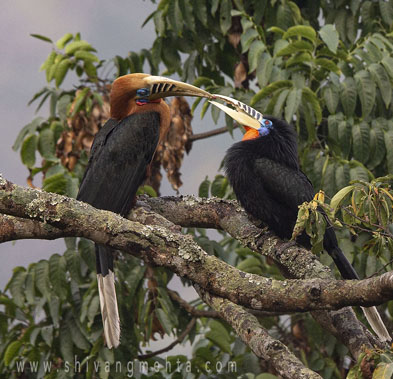
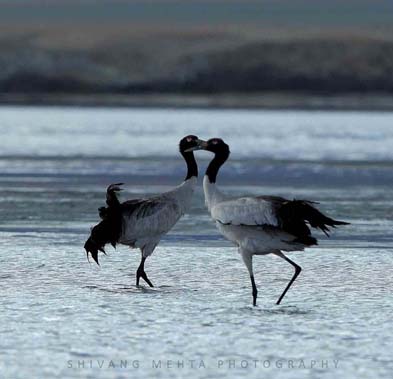
Breeding in the high Tibetan plateau and remote corners in India and Bhutan, this enigmatic bird was one of the last of the crane species to be discovered, due to the remoteness of their habitat. These graceful birds can walk long distances while foraging for food and like most crane species, are known to perform spectacular displays during breeding season. Climate change and its resulting ecological ramifications are the biggest threats that this specie faces today. Get in touch with us so that we can create a specific expedition for you in the Himalayas for photographing this particular bird.
Specify your requirements and fill up this form and send us a query and we would get back to you.
I Would like to receive emails about trip offers and availability updates
We are wildlife specialists, not led by commissions but instead by putting people in the right place at the right time. When you get in touch you\'ll discover what makes our trips so different. Our award winning safaris can\'t be replicated by other companies. A destination specialist will be in touch; we don\'t do hard sales but you will get plenty of inspiration and advice, as well as help creating your next trip.
By submitting this form, you confirm that you agree to our Terms & Conditions.